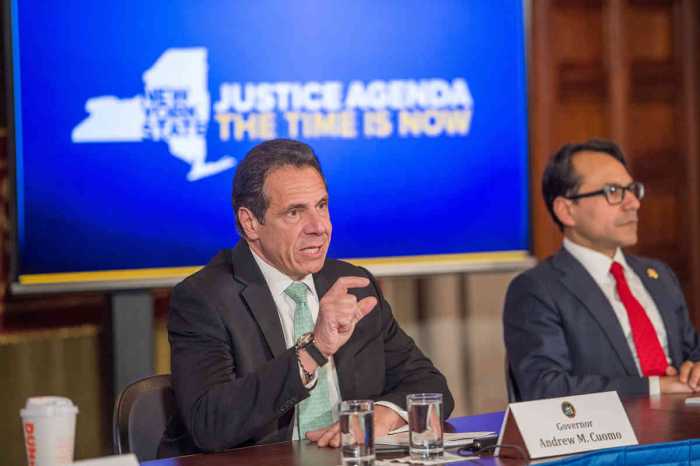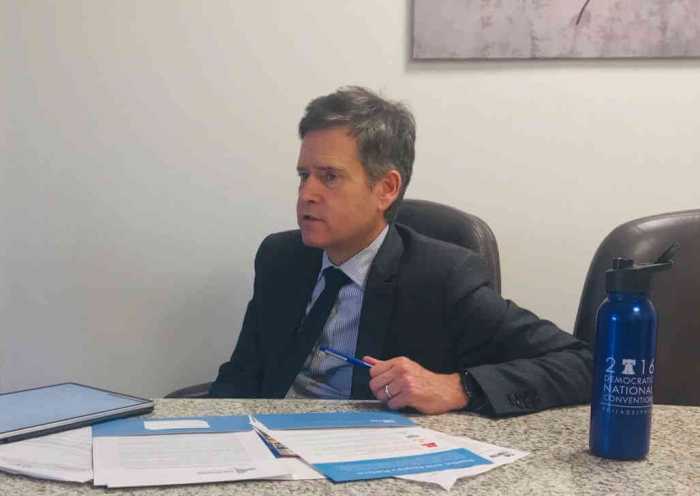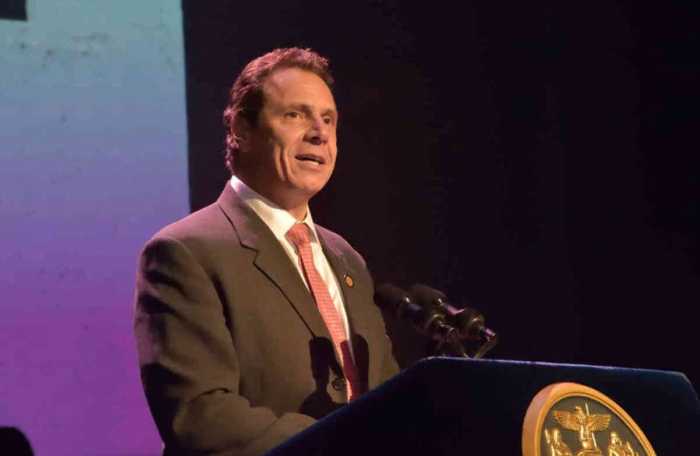There was something fiendishly clever about Governor Andrew Cuomo’s last-minute gutting of a medical marijuana bill devised by the Legislature; he transformed it into a bureaucratic nightmare.
Nonetheless, medical marijuana supporters cling to a grim optimism. This is the governor’s bill — it has to work or he will be responsible was the conclusion offered by State Senator Diane Savino, a Staten Island Democrat who was the lead sponsor of a more ambitious measure that Cuomo rejected. In fact, concessions are being made: in November, the governor signed a bill to speed up delivery of cannabis-based meds to people with serious illnesses, including small children who suffer from a severe and life-threatening form of epilepsy.
Savino made her comments during a December 2 forum sponsored by the Cannabis and Hemp Association, one of two gatherings on the issue last week in Manhattan.
The Long View
The public is supportive of advances in medical marijuana, with 88 percent of New Yorkers endorsing the idea in a poll last year. Forty-three companies vied for the right to be one of five selected to to grow and dispense marijuana medicines in the state. They made the investment despite absurdly restrictive rules aimed at preventing the legal crop from being diverted into the illegal market. Entrepreneurs remained interested even though the governor insisted the State Health Department set the prices.
The most obvious sign of the Cuomo’s animus is the new law’s ban on smoking pot for medicine. Unlike most states with medical marijuana laws, New York will not allow the sale of the leaf to be inhaled. The Legislature, in contrast, was prepared to permit smoking it with a doctor’s recommendation. Smoking or edible pot is favored by patients, but in New York pot must be transformed into strips, pills, tinctures, or vapes before a doctor can authorize its use.
Cuomo was clearly rejecting the larger goals of the social movement that created the medical marijuana industry. Advocates want to demonstrate that marijuana use can be controlled without arrests and soothe the non-smoking public’s anxieties about the drug. By proving that pot improves the health of some users, they hope to demonstrate that the prohibition against pot is irrational.
The two forums last week — the second sponsored by the group Women Grow — attracted 80 people each, many of them entrepreneurs eager to enter a new market.
The Cannabis and Hemp Association’s focused on the constraints in the Cuomo law — particularly the requirement that only a “treating” physician can prescribe cannabis medicine. Given that marijuana remains a Schedule One drug — defined as having no medical use — under federal law, some doctors may not wish to “prescribe” it for fear of running afoul of the Drug Enforcement Agency. Or the doctor may not be interested in undergoing the mandated State Health Department training. What are parents of a child in need of medical marijuana but with a doctor reluctant to engage in the new state program supposed to do? Must they find a new “treating” physician for their child?
Participants in the Cannabis and Hemp forum voiced hope that the governor would not push the new program to that logical conclusion.
The state commissioner of health is mandated under the law to finalize the medical marijuana guidelines by January 7 when it takes effect. Savino and fellow panelists Julie Netherland of New Yorkers for Compassionate Care and attorney Hanan B. Kolko of Meyer, Suozzi, English, and Klein, who represents one of the five companies permitted to sell medical marijuana, agreed that the guidelines are unlikely to force patients to change doctors should a “treating” physician shy away from prescribing marijuana. Though she did not know any specifics on how the regulations were progressing, Savino voiced confidence that the state would devise a workable solution for families who need access to medical marijuana.
Connecticut has no such requirement in its medical marijuana program, though, according to the New Haven Register, its costs are high to patients, who must pay $100 to register with the state and then between $150 and $300 for a doctor’s appointment. Netherland expressed concerns about whether the program there might exclude some low-income patients.
The Cannabis and Hemp Association meeting attracted a diverse crowd of men and women, whites and people of color, and individuals in suits and others wearing jeans. Most hoped to operate small businesses, and many were already selling legal hemp products, including oils and medicinal drops from the hemp plant that are legal because of their low THC content but do contain cannabinoids. The sellers assert that the cannabinoids provide relief for pain, nausea, and inflammation.
The Women Grow meeting, on December 3 attracted small businesses like the Cannasseur Clothing Company and the Art of Edibles, a “cannabis collective” from California that carefully lists how many milligrams of pot goes into each morsel of its gourmet chocolates. Thisis270m.com offers consulting services on the use of social media to expand a business. And Melissa Meyer, the New York City chapter leader of Women Grow, has her own business, Healthmj.com, to assist patients in persuading their doctors to authorize marijuana treatments. Getting doctors comfortable with marijuana as a medical treatment will be important to the new program’s success.
It was lobbying by the patients — especially small children with Dravet Syndrome, a severe form of epilepsy that causes constant seizures — that persuaded the State Legislature to enact medical marijuana. Last week, we heard from a different constituency — the entrepreneurs who want their businesses to grow legally but also want pot legalized.


































